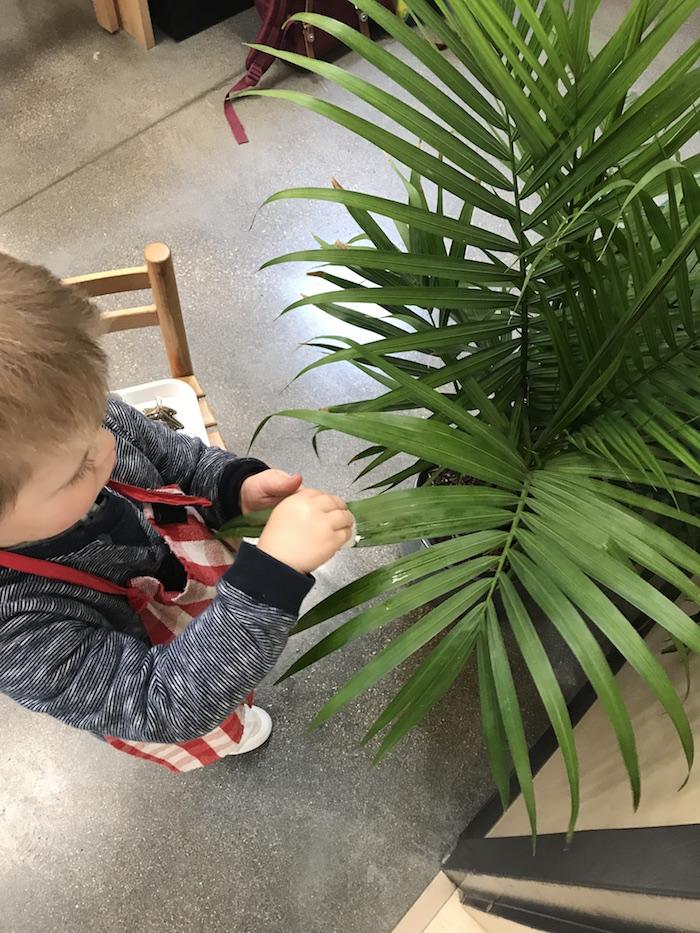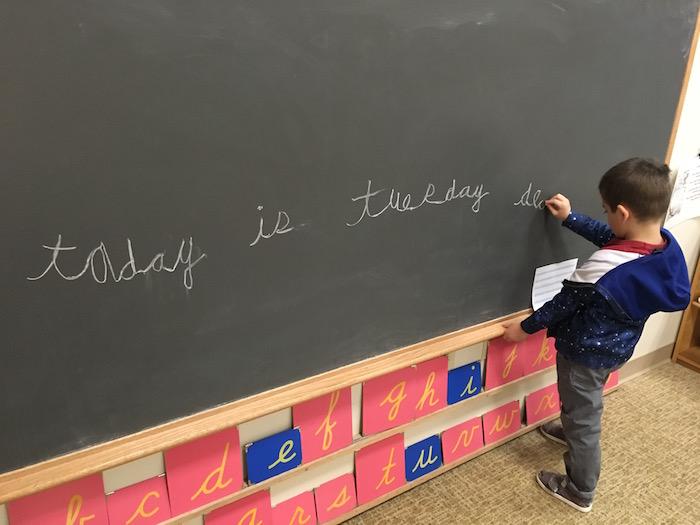The hand, guided by the intelligence, does a sort of work, carrying out the psychic will. It is as though the child, who previously has received the world through his intelligence, now takes it in his hands.
– Maria Montessori
Development of The Writing Hand
From the moment a child enters the Primary environment, they are preparing their hand to hold a writing utensil. For a child to write they first must have developed 3 characteristics of the hand:
- the technique to hold the instrument,
- lightness of touch, and
- a firm hand.
These critical elements are developed naturally, and without effort, through the Sensorial and Practical Life materials within a Montessori classroom.
The technique for holding a pencil is practiced an infinite amount of times through various works throughout the classroom: the cylinder blocks, picking up the shapes in the geometry cabinet, or the work of puzzle maps. Using a pincer grasp to pick up each of these items helps to develop these muscles. By the time the child picks up a pencil, this grip has unconsciously been ingrained in their head, and they are prepared for writing.
The rough and smooth tablets and sandpaper letters prepare the child for lightness of touch. Teaching the child’s fingertips to barely slip over the tablet and then those of sandpaper letters prepares the child to write in cursive with a free, light movement. Writing happens organically and joyfully as the children begin tracing sandpaper letters in conjunction with learning letter sounds, vowels on a background of blue and the consonants on pink. The shapes of the letters themselves are crafted of a high-grit sandpaper, offering the child a point of interest as their fingers follow the gentle slopes of the cursive letters.
The firm hand is developed through all the tracing and molding of the geometry cabinet and the metal insets. These exercises help the hand remain within the prescribed limits so when the child begins to write the hand is controlled. Holding a small needle for sewing, painting at the easel, stringing small beads, and sculpting with clay are some of the ways the children indirectly prepare the hand for writing on a daily basis.
With Practical Life materials the child works toward refining the movements of the hand. The hand will serve the child as the instrument that feeds the mind. With each activity, the children refine and control their fine motor skills and strengthen their manual dexterity, so that they can master more complex tasks. Exercises like table washing and plant care are designed in such a way to enliven their natural order by moving from left to right, preparing them for the later steps of writing. 
As they progress, the child naturally moves into exploration of combining sounds and creating words with the movable alphabet, at the chalkboard and on paper. Children love to practice their writing and will beam with pride as they admire their work.

